Get PeakVisor App
Sign In
Search by GPS coordinates
- Latitude
- ° ' ''
- Longitude
- ° ' ''
- Units of Length

Yes
Cancel
Share ×

Scan the QR code and open PeakVisor on your phone
❤ Wishlist ×
Choose
Delete
Come to the Neverland of the Kamchatka Peninsula, the land of the fiery dragons’ dens, fuming volcanic cauldrons and tranquil serenity of permanent frost vastness. Kamchatka is a unique mountainous region on the easternmost edge of Russia. There is nothing like it on the planet, you can see a staggering variety of volcanoes, mountains, valleys, hot springs and what not. Some places have never seen a man’s footprint; you can fly over them only by a helicopter. There are about 30 active and 160 extinct volcanoes, 274 mineral springs, 160 of which are boiling hot. Also, the region can proudly boast of three big state reserves, 19 state wildlife sanctuaries, 169 unique natural sites and 5 nature parks.
Rare geological objects coexist with distinctive wildlife and neither has suffered much from human activities. Of the 1,168 plant species growing here, 10% can be found only in this region. Rare species needed particular protection make up a large part. The peninsula is the habitat of one-half of the world’s Steller’s Sea eagle population, over 10 thousand brown bears (the Kamchatka subspecies is one of the largest bears in the world), as well as bighorn sheep, wild reindeer, sea-lions and sea otters.

Ostriy (sharp) Tolbachik (r) and Plosky (flat) Tolbachik (l). The naming is pretty straightforward.
Kronotsky Reserve includes three specially protected areas – Kronotsky with its Fudji-like symmetrical cone of Kronotsky Volcano (3,528m, an ultra) and Koryaksky reserves and the South Kamchatka Federal Sanctuary named after T.I. Shpilenok.
The South Kamchatka Federal Sanctuary is located in the south of the Kamchatka Peninsula. This territory can rightly be called the realm of volcanoes, brown bears, and salmon. Ilyinsky (1,578m), Wild Greben - Gora Nepriyatnaya (1,079m, a potentially active one, the biggest lava puff up on the peninsula), Koshelevsky (1,812m) and Kambalny (2,156 m, and an ultra) volcanoes are located here. All of them are active, all represent the power and beauty of the Far East and create landscapes of exceptional beauty. On March 25, 2017, for the first time in 600 years, Kambalny erupted, which surprised even the old-time volcanologists. The volcano is still active today. The total number of volcanoes in the reserve is 25, eight of which have no slightest intention of going dormant, and from time to time they burp with ash and lava.
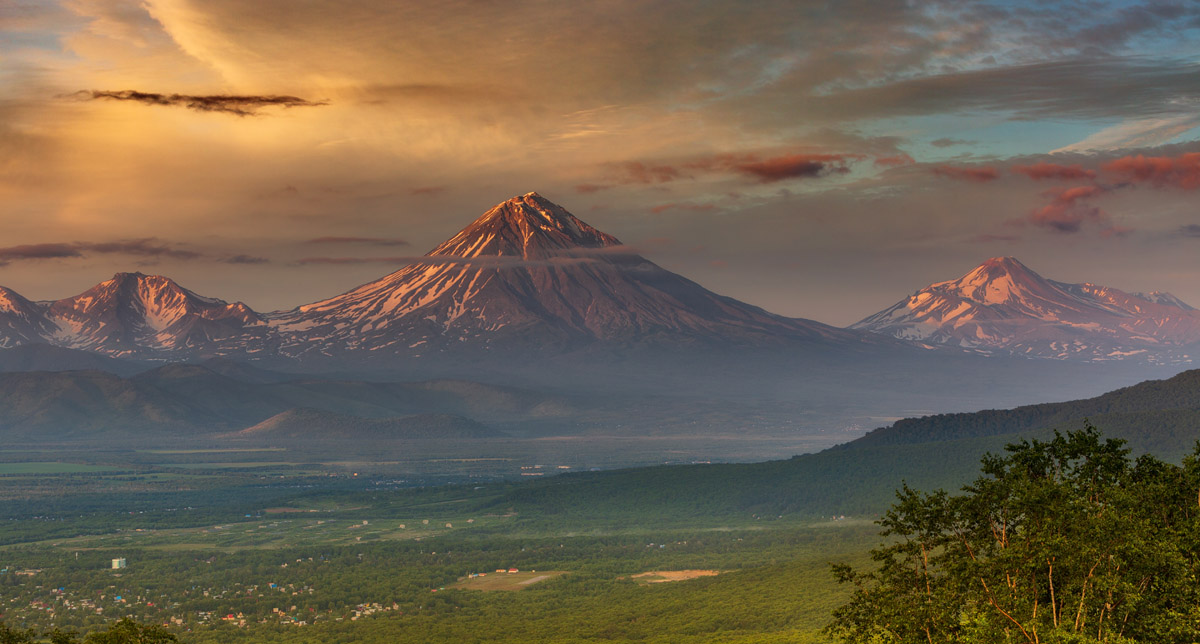
The Valley of Geysers
The Valley of Geysers is the second largest out of five world geyser areas. The Kronotsky Nature Reserve was founded in 1934 and those devilishly fuming hot-water spitting geysers were discovered only 6 years later. The valley is a small part of the gorge formed by the mountain river Geysernaya. Here you can observe all known forms of hydrothermal activity: hot lakes, pulsating boiling springs, steam and gas jets, mud boilers, and, of course, geysers – there are more than 50 of them in the fuming gorge. "Giant", "Pearl", "Sugar", "Triple", "Cone", "Small Fountain", "Bolshoi Fountain" are just some of the names. There are geysers that erupt with a jet of boiling water every 10-12 minutes, and there are those that erupt once every 4-5 hours. Steam clubs, fountains of hot water, the incredible color of the slopes on which hot water flows, along with the lush greenery of shrubs and trees, create an enchanting spectacle. Everyone who visits the Valley of Geysers for the first time feels its hypnotic power.
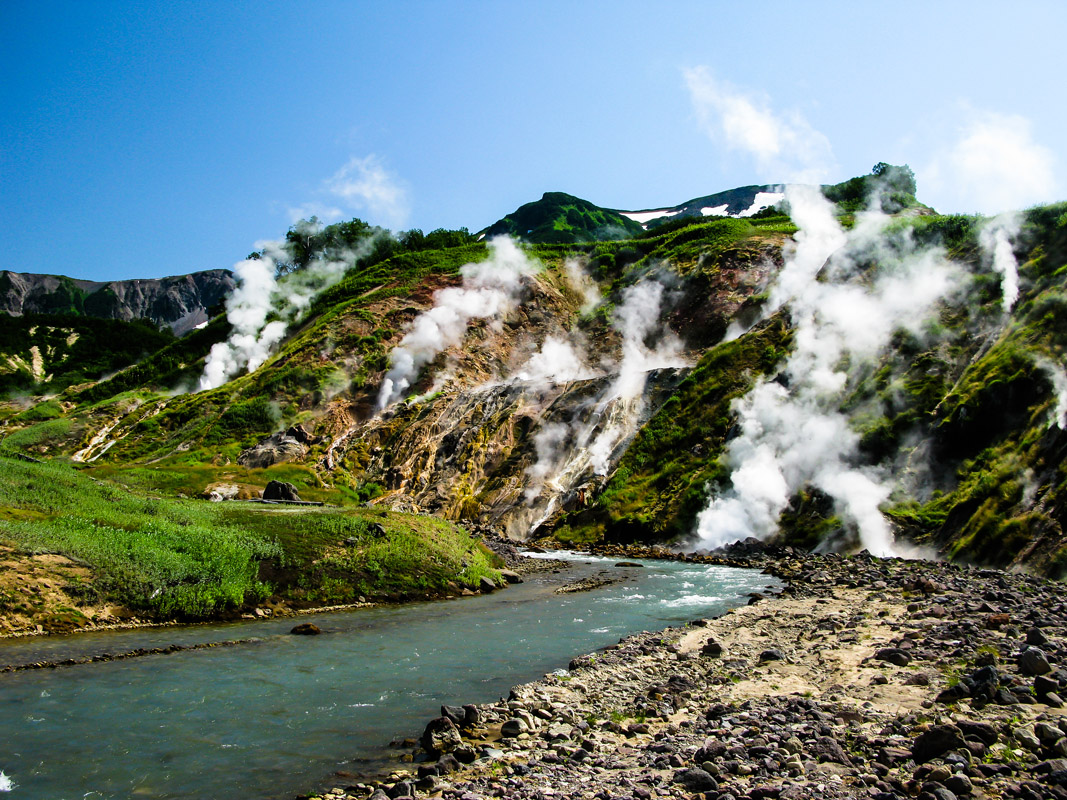
The Valley of Geysers is one of the precious natural treasures of Kamchatka
Yet, this feast for the eye is not for the faint-hearted or those who suffer from aerophobia. Mother Nature has hidden this amazing place so skillfully that it is possible to get there only by air. Vityaz Aero is one of the companies providing services for the transportation of tourists by helicopter MI-8 to the valley. Flights are operated from June to October. Each group of tourists consists of 10-23 people who are accompanied by a guide throughout the tour. The cost of the tour includes a flight over the active volcanoes Karymsky (1,468m) and Maly Semyachik (1,560m), a walking tour in the Valley of Geysers. The total duration of the excursion is 4 hours, the helicopter takes off from the helipad of Nikolaevka in the morning. The cost of the tour is approximately 37 000 rubles ($400-500).
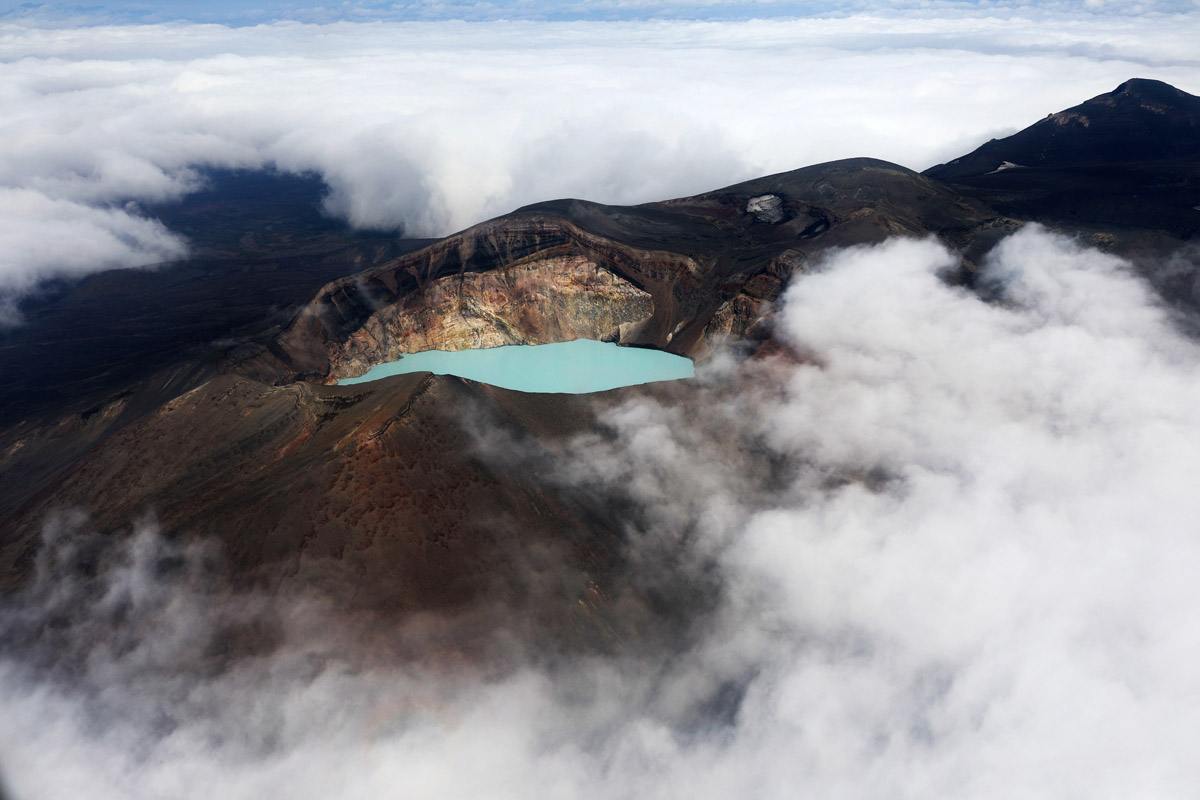
You are safe as long as you walk on the wooden or marked paths. Step aside and who knows where you’ll find yourself next. Maybe on the other side of the world. No joking, the ground may be very treacherous in some areas.
Uzon Caldera
At 15 km from the Valley of Geysers there is another amazing object – Uzon Volcano caldera. This amazing eerie and alien-looking place can boast of ice-cold rivers and a berry tundra, there are about 1000 thermal springs, fumaroles, mud boilers, thermal lakes. In summer bear families feed here on berry tundra, without paying any attention to tourists. Yet, let their seeming disinterest not fool you, those predators are well aware of who is prying on their privacy, so don’t come up too close. Occasionally, you can also encounter wild reindeer.
The valley hollow of approximately 9 x 12 km was formed as a result of a series of eruptions of a huge volcano about 40 thousand years ago. Calderas can only be reached by helicopter. It is possible to organize a tour by contacting a travel agency with helicopter tours. Departures are made from June to October. Duration of the tour is around 6 hours. The tour includes hot meals and bathing in hot springs when landing in the natural park "Nalychevo". The cost is about 44,000 rubles ($600-700).
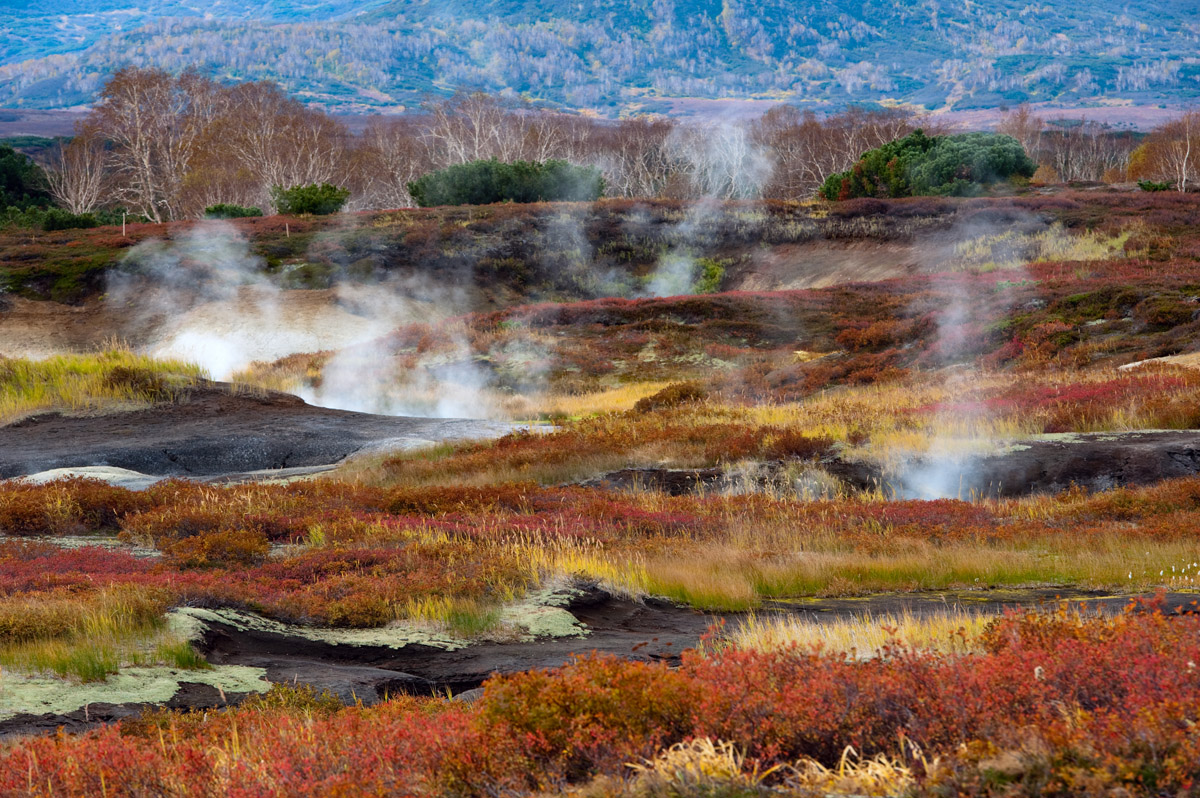
Uzon Volcano Caldera is a natural lab under the vast open skies

Marshy fuming wetlands make a perfect backdrop for a horror movie. Something wicked comes this way.
Kronotskoye Lake
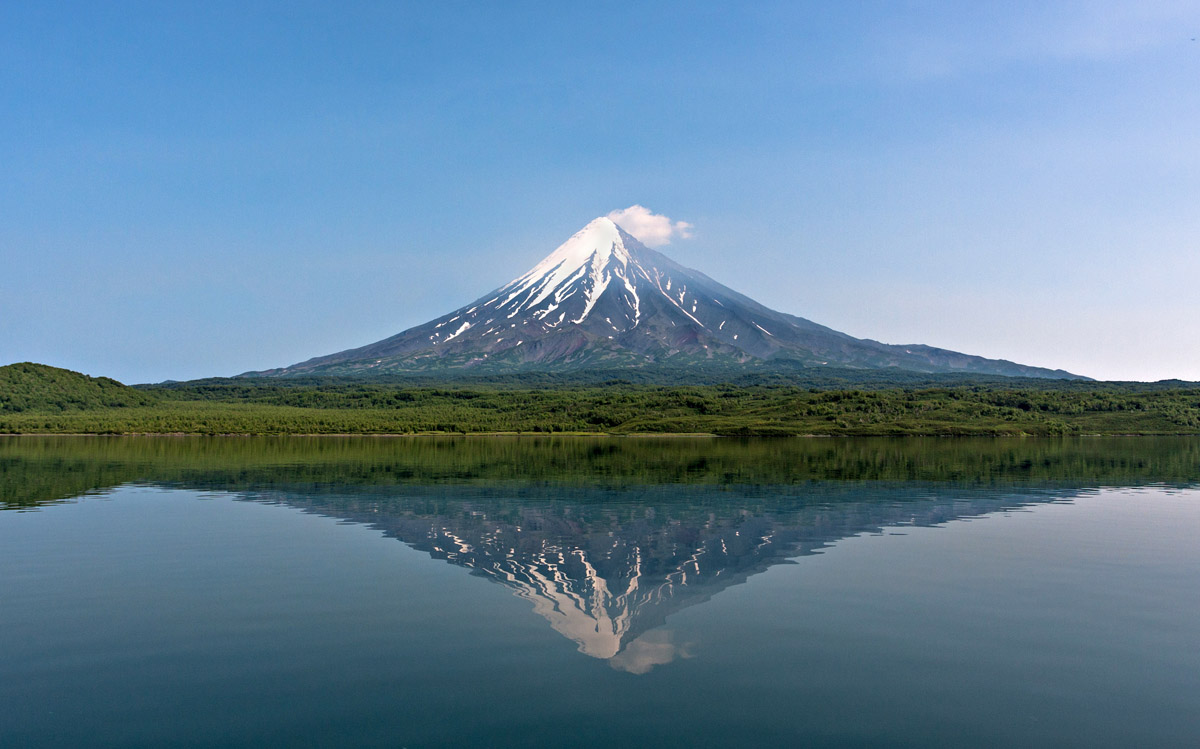
The central part of the Kronotsky Reserve is a uniquely diverse area of volcanoes, glaciers, mountain rivers, crystal clear lakes and larch forests. It is here that the largest lake – Kronotskoye sometimes spelt as Kronotsky – is located. Its surface reflects the most beautiful of the 25 volcanoes of the reserve – Kronotsky Volcano (called ‘Hill’ by the locals), it rises to 3,528m above sea level, belongs to the category of Ultra (topographic prominence of more than 1,500m). So to speak, it is towering against the background of other mountains in the area. There are no specialized tourist routes to Kronotskoye Lake. As a rule, it is visited together with the Valley of Geysers on a helicopter tour. Should you wish to try your luck and test the elements, special permission is required but still, independent trips are prohibited, you can only go with a tour guide or a park ranger. Employees of the reserve, and in particular inspectors (aka park rangers) can arrange a tour of the lake by boat.
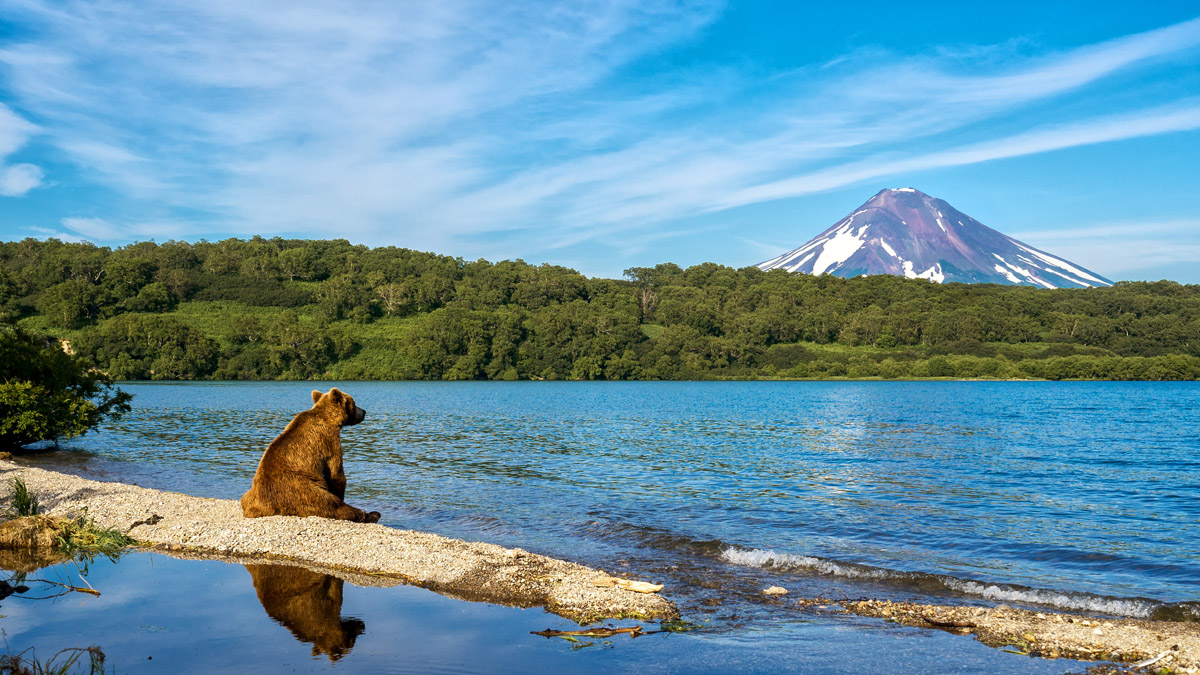
Kronotsky Lake is the biggest in Kamchatka
Kurilskoye Lake
Kurilskoye Lake in South Kamchatka Nature Reserve is highly popular among tourists. Here one can observe bears of different ages, catching red sockeye salmon that comes to the lake for spawning in large numbers. The fish is so heedless that it comes at a very close distance and you have a sensation you might catch it with your bare hands. The estimated amount of an annual pack of sockeye breeding in the middle of the lake is about two million fish. The abundance of fish creates perfect conditions for brown bears feeding on the shores. In the first days of the mass movement of fish there can be found about 30 fishing bears! Here is a nicely shot film on Kamchatka bear. Above the lake floats many species of birds. Add a stunning view of the volcanoes in the reflection of the lake's surface and you get a perfect holiday picture in the most beautiful place on earth.
You can take a day trip to the lake by helicopter and the best time to do so is from July to early September. The flight takes 1h 20min, after which you are taken on a guided walking tour along the lake shore. There are also jeep tours, the road will take the whole day (450 km), and after that there is a pedestrian crossing to the lake (15 km) which must be done on foot, any driving is prohibited in the wildlife reserve.
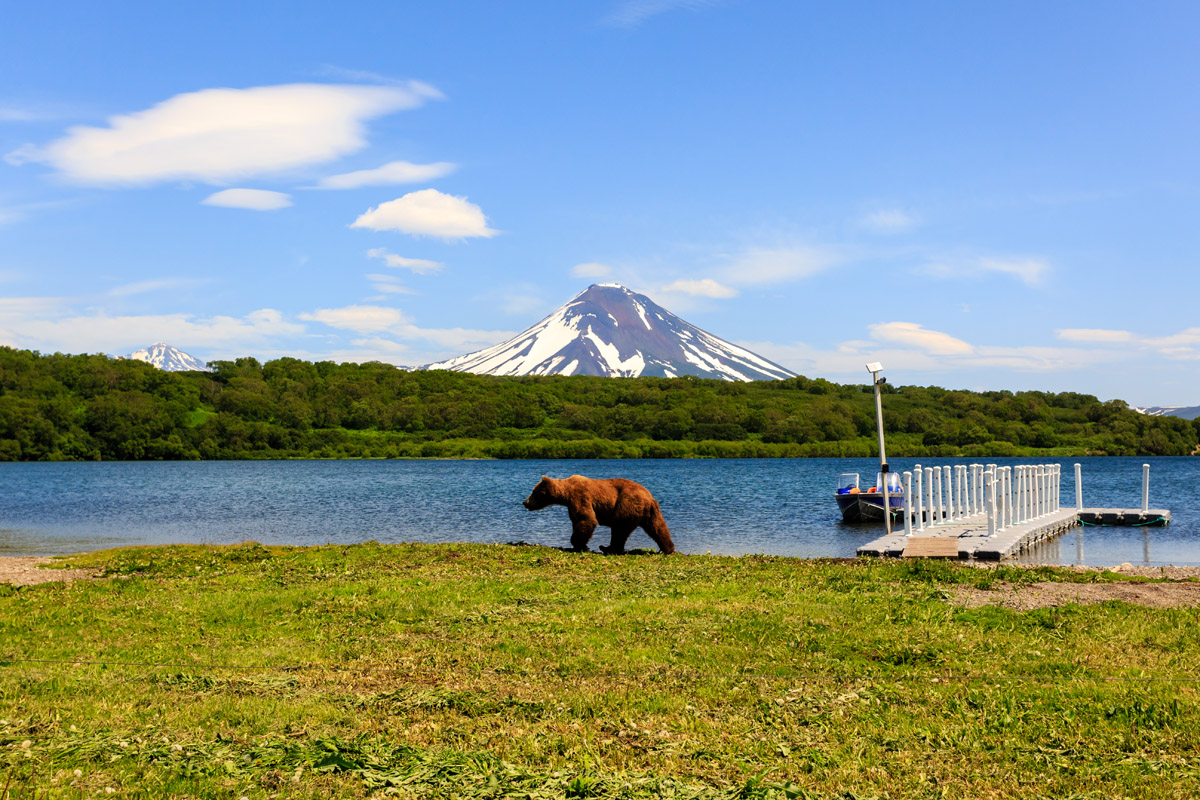
A common sight of a bear at Kurilskoye Lake with Ilyinsky Volcano in the backdrop.
In 1985, the Kronotsky Reserve was included in the World Network of Biosphere Reserves. In 1996, the Kronotsky Reserve and the South Kamchatka Federal Reserve were included in the list of UNESCO World Natural Heritage Sites in the nomination Volcanoes of Kamchatka.
In contrast to the protected area, the nature park can also be visited by independent travellers, but a permit to visit the area must be obtained and the route agreed upon. Detailed information about the rules of visiting the park can be found on the official website of the park.
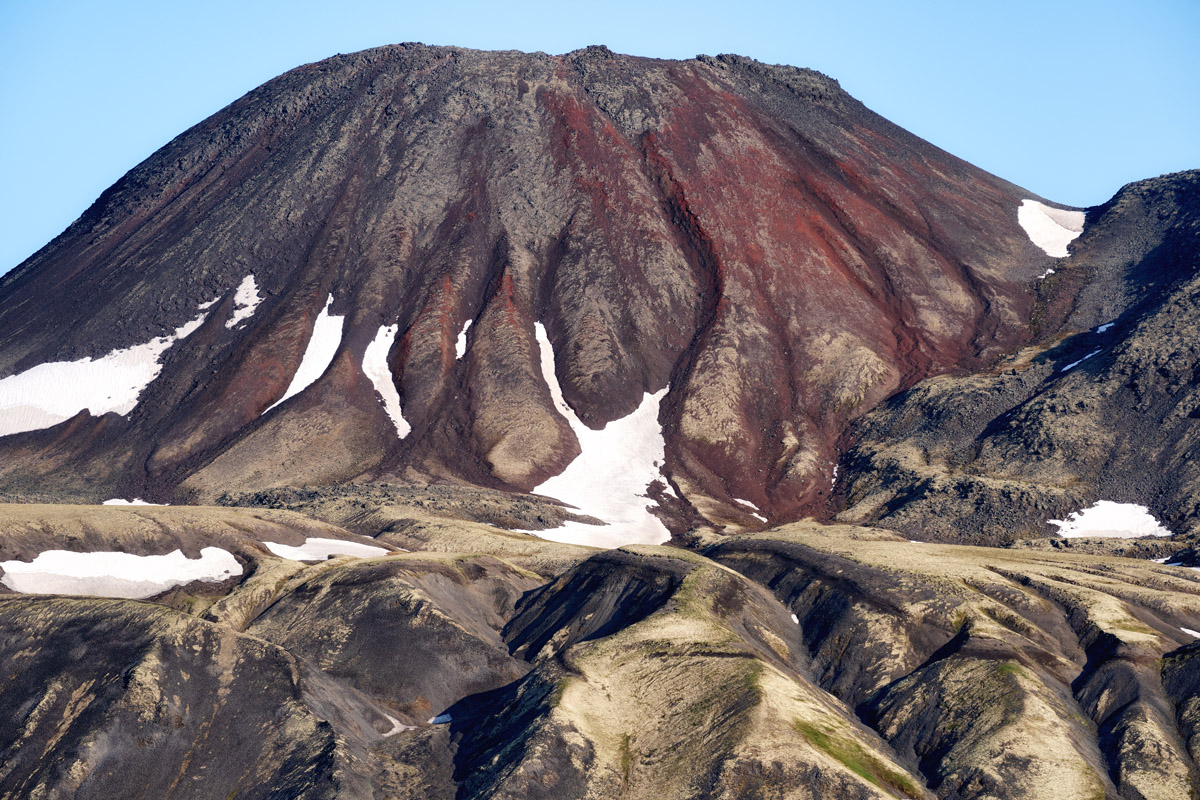
The territory is divided into four natural parks:
The Nalychevo Nature Park is popular with hikers who prefer to climb volcanoes and enjoy wide perspectives. It includes the valley of the Nalychevo River with an opening to the shores of the Pacific Ocean and its mountain setting that consists mainly of ancient extinct volcanoes and four active ones such as Avacha or Avachinsky (2,741m), Kozelsky, Arik, Aag, Zhupanovsky (2,927m), Dzenzur (2,256m) and one of Kamchatka’s highest volcanoes Koryaksky (3,456m).
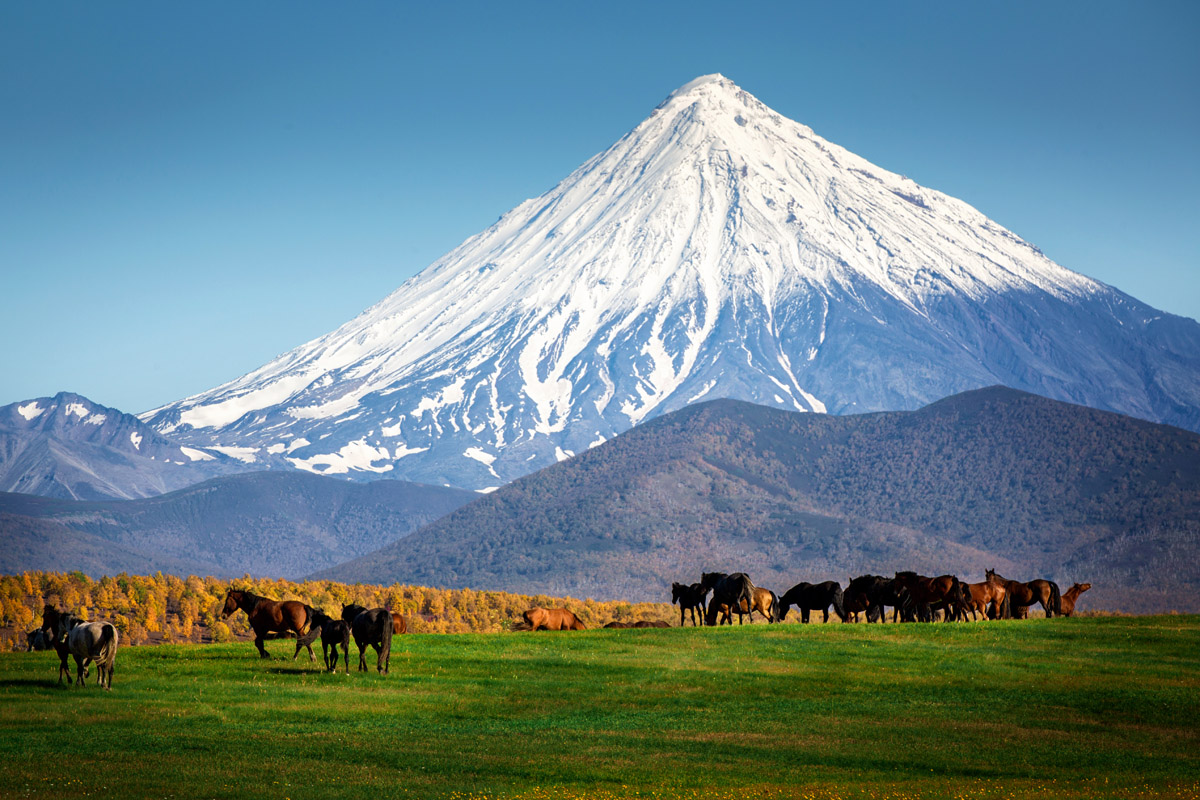
Travellers seek this place to drink crystal clear waters of the mountain rivers, admire the lakes and plunge into the thermal springs at any time of year. The park is rich in vegetation and animals, especially such cute tourist favorites as Kamchatka little marmots – the so-called eurasian gophers that can be fed with nuts or just watched for their funny habits.
The foot of the volcanoes is conveniently reached by an off-road vehicle. The road takes 5-9 hours, and it is possible to rest in the park huts. One of the most beautiful and easiest routes is the radial exit to the Aag (Chistine) Narzan hot springs. The route runs along the mountain tundra which offers a beautiful view of the extinct and active volcanoes of the park. On the way there is a waterfall on the river Shumnaya. The water of the springs tastes heavenly, it is close to the composition of the Caucasian thermal waters. After a day trip it is best to relax in the hot springs of Goryacherechenskie and Zheltorechenskie.

The cutest meerkats ever - Kamchatka’s evrazhki (eurasian gophers)
On the territory of the park there are the following volcanoes: Vilyuchinsky, Mutnovsky, Sopka Asacha, Khodutka, Ksudach, Zheltovskaya. There are also a lot of thermal springs here, among the most famous ones are Khodutkinskie, Mutnovskie, Vilyuchinskie, Asachinskie.

The park is ideal for aficionados of hiking trails and active sports. You can go skiing, snowboarding and snowmobile riding at almost any time of the year. If you cannot visit the Valley of Geysers, then go to Mutnovsky volcano. There is a geothermal power plant on the mountain plateau, and the Geotem Hotel, located near the volcano. Its windows open onto boiling springs with hydrogen sulphide fumaroles, warm lakes and mountainous terrain. It is necessary to be careful and not to approach the sources of natural steam, there is a possibility to fall into them and be boiled alive, just like in many Russian fairy tales, you may come out alive and renewed after a hot boiling bath, but who believes in the old stories?
This park is located in the most powerful volcanic region, there are majestic and hard-to-reach volcanoes, four of which are active. The most famous of them are: the highest of Kamchatka Klyuchevskaya Volcano, Bezymyanny, Ushkovsky, Tolbachik.

The most interesting of the tourist routes, and at the same time the most difficult to access is the one going near Tolbachik Volcano. Here you can see how the "young" Earth looked like, cast a glance into the mouth of the active volcano and immerse yourself in the beauty of fantastic landscapes that defy any imagination or description. The destructive power of volcanoes in the Dead Forest, near Tolbachik Volcano, is particularly evident. The forest landscape here is post-apocalyptic because of the scorched earth with a layer of ash and sparsely standing charred trunks of trees.
Klyuchevskaya Nature Park is an area of increased danger for tourists. Therefore, anyone who wants to visit the park on their own or as part of a tourist group should coordinate their route and obtain an entry permit with the administration of the park "Volcanoes of Kamchatka". You can get to the park by bus from Petropavlovsk-Kamchatsky to Kozyrevsk (500 km). Travel time is 10-12 hours. There are two local roads leading from Kozyrevsk to the park. In the village you can rent a car with a driver. Another available means of transport is a helicopter. The flight time is about 3 hours.
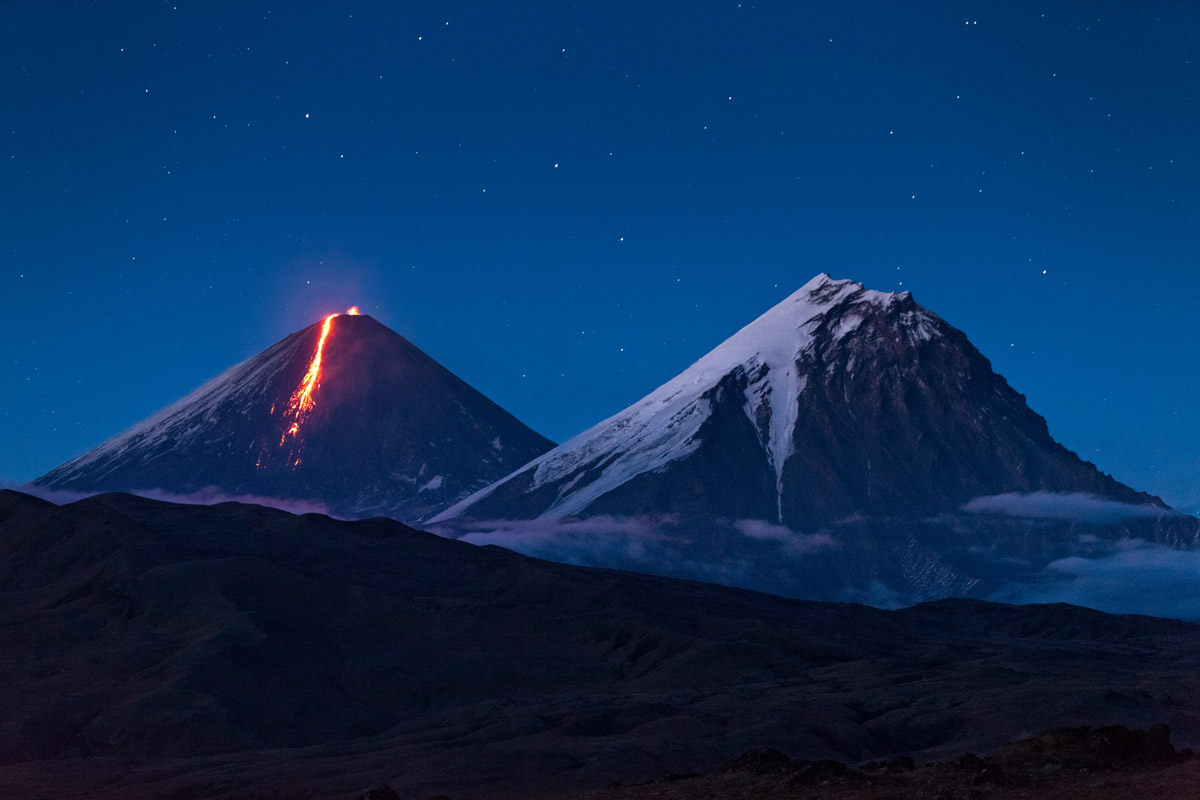
Klyuchevskaya Volcano (l) and Kamen' (Stone) Volcano (r)
This park will appeal to those who are interested in the traditions of the indigenous people, because this is the place where they live to this day. You can have a look at their original way of life in the villages of Esso and Anavgay. There is an ethnographic museum in Esso and now an open-air ethnographic complex in Anavgay. The park has good facilities for active leisure time – you can climb volcanoes (here is located Ichinskaya Sopka), swim in lakes and luxuriate thermal springs, raft the mountain rivers and much more. In the cold season, it is a great place for snowboarding and mountain skiing.
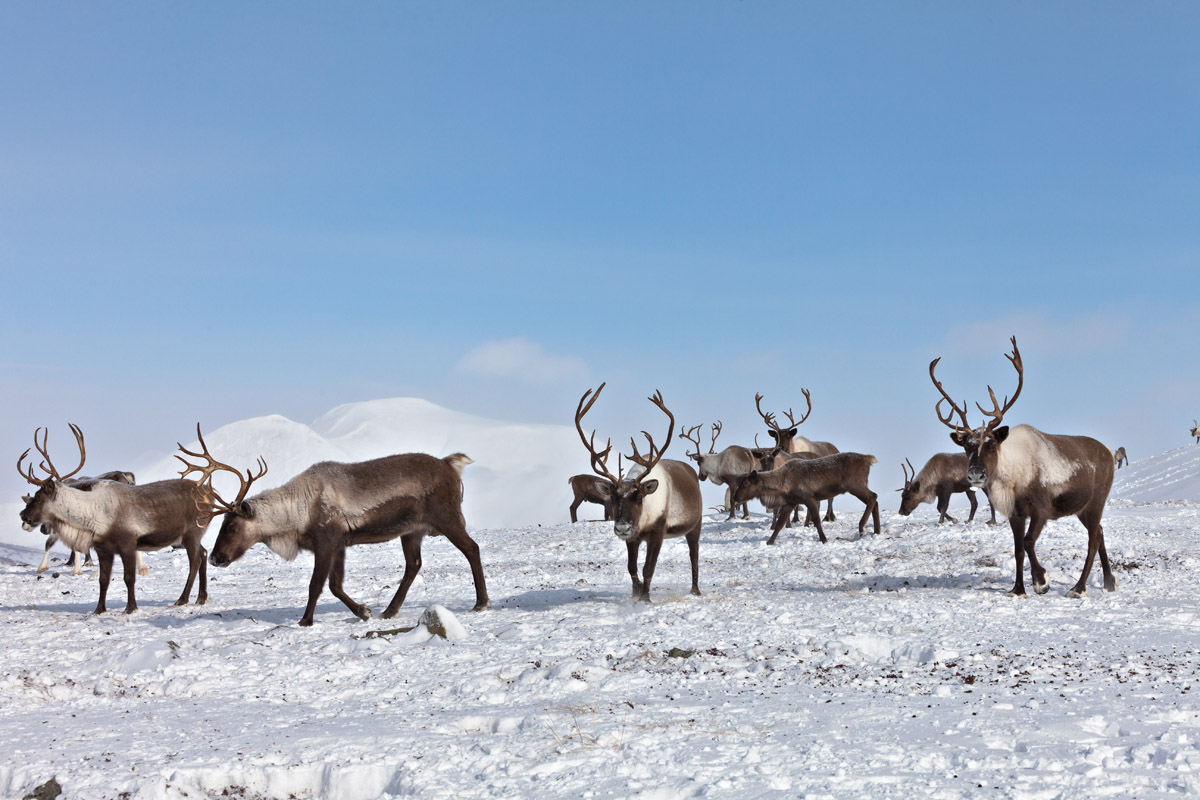
Reindeer
The Avacha Bay is one of the largest bays in the world, it does not freeze in winter, which makes it unique regarding the latitude it is at. This place is ideal for sailing. Most routes depart from the central seaport of Petropavlovsk-Kamchatsky. Take a small white yacht and sail to the natural monument of the rocks – The Three Brothers. According to an ancient legend, these brothers protected the inhabitants of the peninsula from a particularly disastrous tsunami and were thus petrified forever for standing in the way of the gods' powers. You can also sail through the gates of the bay and embark on an exciting journey in search of orcas, seals, and if you are very lucky, even whales. This is an amazing opportunity to see all big sea mammals in their natural habitat.
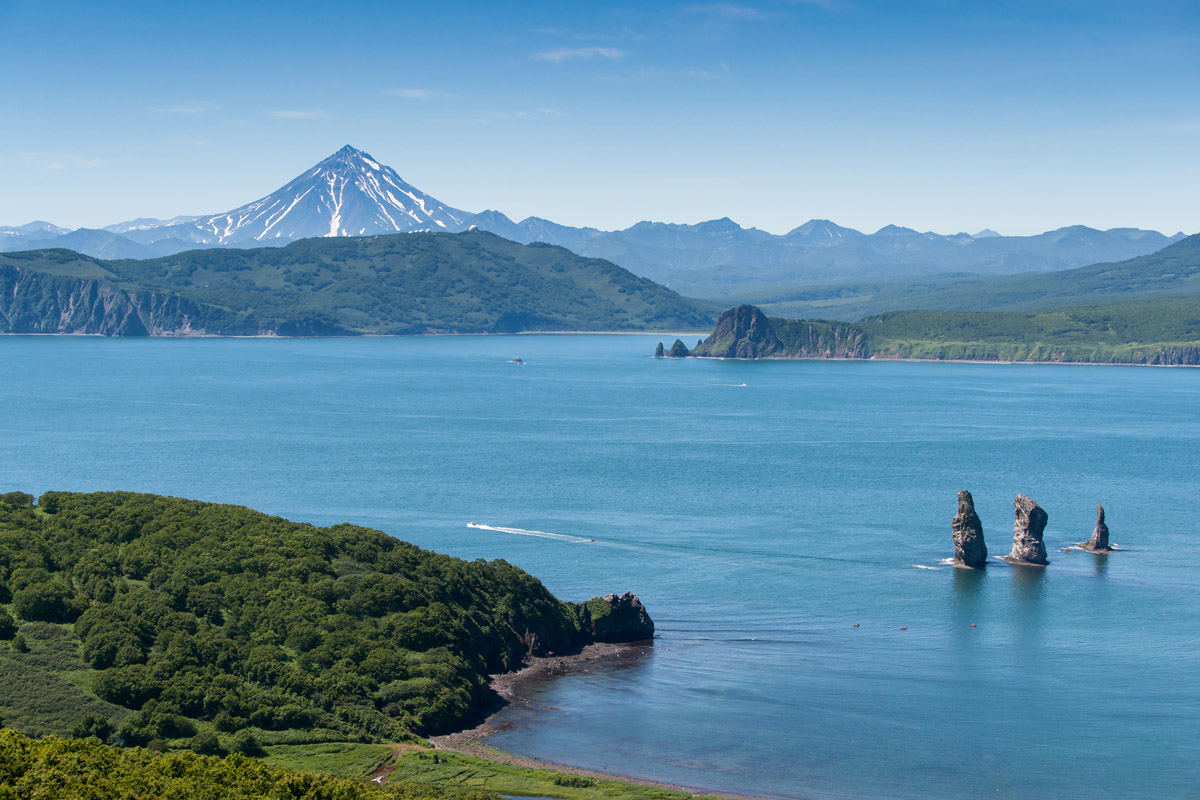
The Avacha Bay from a bird’s eye view
The Blue lakes are an amazing but inaccessible place on the peninsula. You can meet brown bears and other wild ferocious animals on the way to the lakes, but in the end you will be rewarded with a stunning view over three lakes with crystal clear water of azure shade, which are located in a wide gorge. The excursion to the lakes begins with the starting point at the ski resort Moroznaya Gora (GPS Coordinates: 53.180937, 158.284090, close to Elizovo (7km) and just 37 km away from Petropavlovsk-Kamchatsky). You can leave your car at the foot of Moroznaya Mountain and embark on the 15-kilometre passage to the lakes. The first part of the route runs along the forest path with Kamchatka stone birch trees. Stop for a snack and rest on the Polovinka River and go further along the rocky terrain, where the slope of the trail increases significantly. The route can be arranged for two days with a sleepover in tents by the lakes, or you can set out early and make a round-trip in one day.
Should you be attracted to some skiing, Moroznaya Gora ski resort offers 5 tracks of various difficulties (from a 2,050m piste for slalom / giant slalom to a 300m piste for complete novices and kids). The piste angles vary from 10 to 30 degrees. You can see Koryaksky and Avacha volcanoes from the top of Moroznaya Mountain. The skiing season is December to April, but beware of strong cyclonic winds that bring a lot of snow at the end of the season in February - March. The ski pass for a weekday is 1000 RUR and 1600 RUR for the weekend (approx. 15/25 USD respectively)
The Blue lakes with azure blue waters (well, closer to sapphire blue in this pic)
The starting point for the Blue Lakes route
Volcanoes of Kamchatka infallibly attract travelers from all over the world. Amazing routes of different complexity for all ages amaze with their mind-blowing unearthly landscapes, peculiar vegetation and the abundance of wildlife.
Climbing can take from one to several days depending on the complexity of the route and the physical fitness of the hikers. One-day climbing is feasible for almost everyone.
The main volcanoes for climbing in Kamchatka are the active Mutnovsky and Gorely volcanoes. While ascending, it is possible to visit hot springs, see waterfalls, take in vast mountain plateaus, and have the most unusual lunch in your life, which can actually be had in the crater of the volcano.
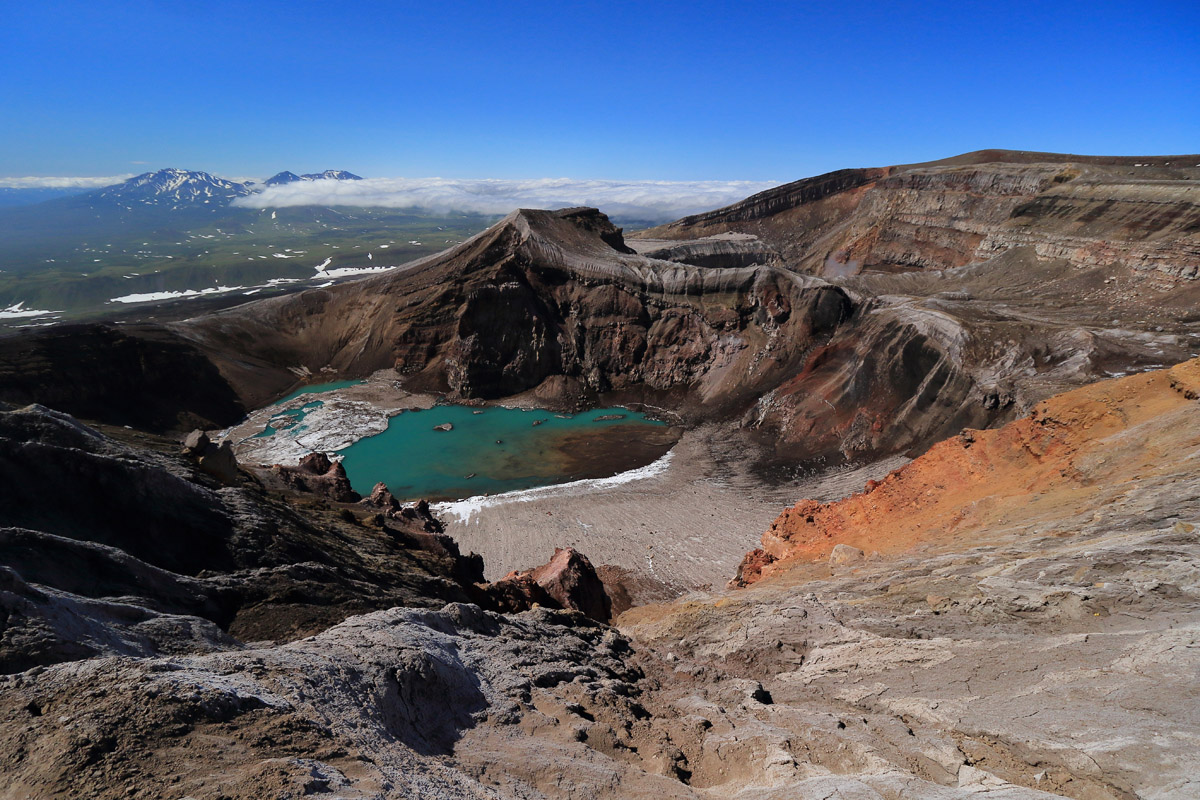
Avacha and Vilyuchinsky volcanoes are probably the most popular judging by the number of ascents. The former has good transport accessibility, and from its top there are stunning views of the Pacific Ocean. A hiking trail winds along the volcanic ridge, the slope is steep and reaches 30 degrees. The length of the entire route is about eight kilometers.
Every year in August, Kamchatka residents and guests of the peninsula traditionally make a mass ascent to Avacha volcano on the Volcano Day. It is now an officially recognised holiday, usually celebrated for several days, in 2019 it lasted from August 16 to 19.
Vilyuchinsky volcano (2,175m) is not difficult to climb to a certain height, yet if you wish to breathe in some sulphur trioxide fuming sometimes from the top, you will need special climbing skills. The ‘commoner’ route, as a rule, lies on the south-western slope. On the way up, you will see cedar bushes, mountain streams and a waterfall. For the brave ones, there are great opportunities for a 6-km free-ride down the slope which is 15 to 35 degrees steep.
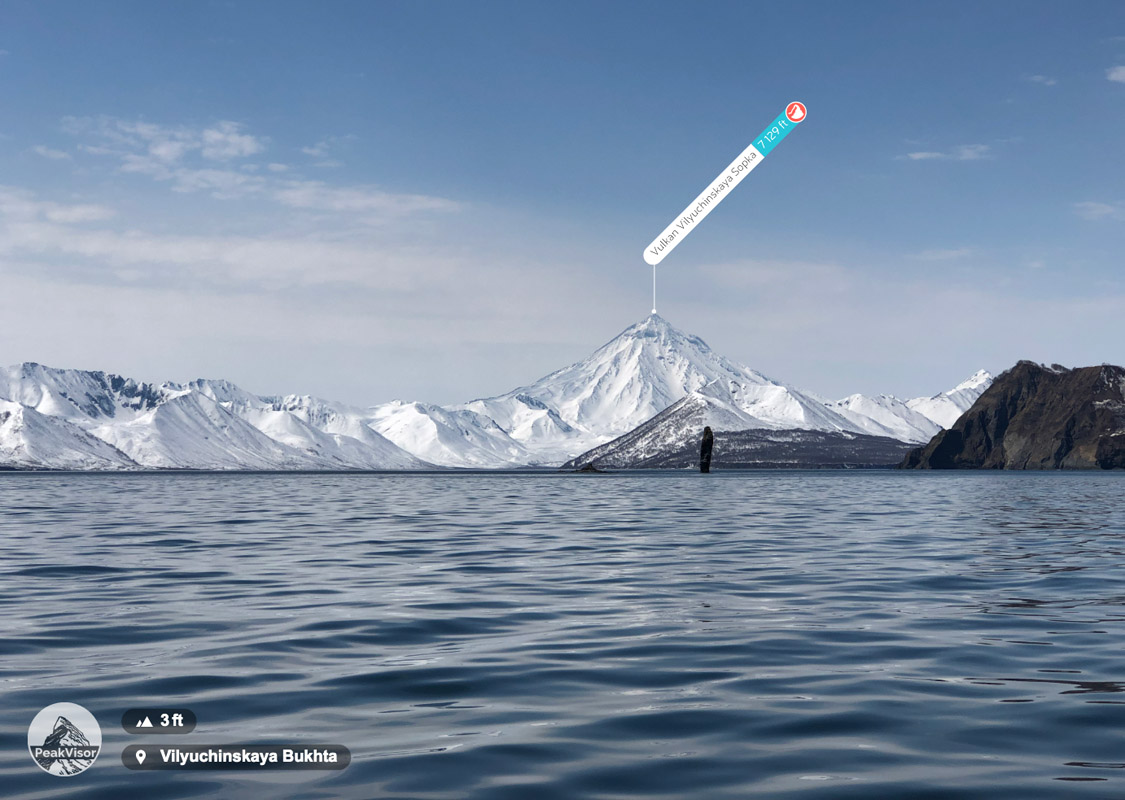
The mighty shape of Vilyuchinksy Voclano as seen from the bay
For skiing and snowboarding enthusiasts, there are four ski resorts in Kamchatka, which are located near its capital, Petropavlovsk-Kamchatsky, in the south of the region: Moroznaya Gora, Edelweiss, Krasnaya Sopka, and Kirpichiki. However, they are quite small with less than 5 km (3 mi) of slopes and ski lifts. But the region is still known on the ski map of Russia and even the world.
Kamchatka is the place to go for most extreme freeride in great surroundings. As Kamchatka can still boast of pristine nature, there are plenty of unequipped slopes fit for freeriding or heliskiing practices. Freeride technique requires special physical training and skill and implies fast speed, whereas heliski takes it to the next level since you would also need a helicopter to get you to the top of the mountain to start a free-fall-like ride down.
Kamchatka is probably the only region in Russia with such intensive helicopter transportation. It is possible to get to various picturesque areas with unique natural sights only by helicopter. Volcanoes such as Avacha, Vilyuchinsky and Bakening are available for skiing in this way, and you can possibly descend to the Pacific Ocean coast.
Check the Kamchatka ski resorts map on the larger Russia ski resorts map in the World Mountain Lifts section of the site. It includes information about open ski lifts / slopes in Kamchatka in real-time with opening dates and hours. There are also year-round cable cars, funiculars, cog railways, aerial tramways, and all other types of mountain lifts.
There are only three cities in the Kamchatka region - Petropavlovsk-Kamchatsky, Elizovo and Vilyuchinsk. And if the first two are open for a free visit, Vilyuchinsk is accessible only to military residents and their families, as there is a nuclear submarine base in the city. The region consists of 11 districts, some of which are small villages that are close to natural attractions. Many of them have developed infrastructure necessary for living and tourism.
Petropavlovsk-Kamchatsky is the main and oldest city of the peninsula. The airport from which you can get to it is located in the nearest town of Elizovo, you can fly from the main Russian cities throughout the year. The city has developed touristic facilities, many agencies ready to surprise even the most fastidious traveler. There are various options for accommodation from hostels, mini-hotels to comfortable hotel apartments with an extended list of services.
The beauty of the city is that it perfectly blends urban and natural landscapes. Due to developed infrastructure you see and access any of the ‘home’ volcanoes, called so by the locals for their proximity to the settlement. These are Avacha and Koryak volcanoes, which are active, as well as extinct Kozelsky, Arik, Aag.

The Mokhovaya Bay gives you that special vibe of being so close to the wilderness. It is amazing that within the city you can see the rookery of sea lions listed in the Red Book. If you catch them on the spot, you will be amazed by the view of these graceful animals, their Peter Pan’s naivety and immediacy and total lack of fear of people. However, you should not go too close to them, let alone feed them, it is better to just watch sea lions in their natural habitat from a distance.
A walk around the city is a nice way to get acquainted with the locale, walk along the embankment with its beautiful views, drop in to a local park and visit Nikolskaya Sopka, which is more famous as the Mountain of Love, because it is a truly romantic place. Close to Nikolskaya Sopka (up Lenina Street and past the theatre) there is a memorial complex in honor of the defense of the city during the Crimean War. Yes, you read it right, during the Crimean War (1853-1856) several English and French warships approached the shores of Petropavlovsk-Kamchatsky. Their purpose was to seize the territory and weaken the Russian influence in the Pacific Ocean, while the primary Russian fleet was preoccupied with the brawl in the Black Sea. The Avacha Bay is one of the most convenient and largest harbours in the world. During fierce battles, Russian soldiers managed to repel superior enemy forces and defend their city, thus the monument came into being.
If you want to see the city in all its beauty and diversity, be sure to climb the Target (Mishennaya) Hill - the highest point of the city. There is an observation deck with a stunning view of the city and its surroundings - the mysterious ocean, cliffs, picturesque coves, volcanoes and city buildings.
If you have a soft spot for sea trips, then make sure to go on a trip on the Avacha Bay, look at the hills and volcanoes, visit the coves, capes, and islands.
The second largest city, but no less popular among tourists is Elizovo. This area is an important transportation hub, because here is the local airport that transports travelers from Russia and other countries. The city itself cannot boast of a large number of attractions, but there are enough places of residence with comfortable conditions. And it is a nice start-off point for exploring the volcanoes, thermal springs and Nalychevsky nature park. Those who come to Kamchatka for hiking, fishing, hunting, and skiing often stay here as well.
Besides, there is a monument "Here Starts Russia", which is familiar to many people from the photos on the internet, behind which the volcanoes look especially picturesque. The monument depicts a bear with a fish in its mouth and a bear cub.
Paratunka is actually a village located in the Elizovsky district, but it has a very cute resort with thermal mineral springs which healing properties are used for treating various diseases. They were created due to the volcanic activity typical of the area. Therapeutic pools with blue-green algae at the bottom are equipped in the places where the springs come out.
There are several sanatoriums and spas at the resort which use thermal water and hydrogen sulphide muds from Utinoe Lake to treat patients. Paratunka will cure not only your body, but your soul as well, as it is a convenient point for hiking to volcanoes.
The best respite after a good hike or climbing is nice soaking in hot springs
The settlement is located in the Ust-Kamchatsky district, at the distance of about 570 km from Petropavlovsk-Kamchatsky. You can reach the place by bus or car. The village is popular among travelers due to the proximity to the active volcanoes of the Klyuchevskaya group, in fact many routes begin from the village. Fans of fishing in the area will find rivers rich in fish.

A mother bear with its cubs after some good fishing
Another village, located at a considerable distance from the capital of the Kamchatka region, in the central part of the peninsula, is called Esso. This small village is situated on the high mountains, its impressive landscapes and clean air have a calming effect on tourists.
There are thermal springs scattered in the area and right in the village there is a swimming pool with thermal water where you can take healing baths. Interestingly, hot springs are also used by residents for heating houses.
This place is suitable for tourists who prefer active recreation. You can make a trip to the extinct volcano Olengende or to the nearby volcanoes of the Klyuchevskaya group, for example, Flat Tolbachik.
There are also routes to the picturesque lakes. Fans of extreme entertainment will like white water rafting on the river Bystraya among the rocks and spurs of the Mid Ridge, which is organized by guides. One can also go fishing here.
The real highlight of the place is an opportunity to get acquainted with the culture, traditions and rites of indigenous peoples of the region. On the territory of the village, there is an ethnographic museum, a part of its exposition is located in the premises, and the other part is under the open sky. Here you can see the reconstruction of traditional aboriginal homes, musical instruments, shamanic paraphernalia, household items and other exhibits. Another original museum in the village is dedicated to bears, which were considered to be totemic animals of indigenous people.
In winter you can go skiing and snowboarding at the ski resort Moroznaya Gora (see the description above), which is nearby. The slopes are designed for both experienced skiers and beginners. You can also go snowmobile riding or hunting in winter season.
Here are some more photos from Kamchatka.

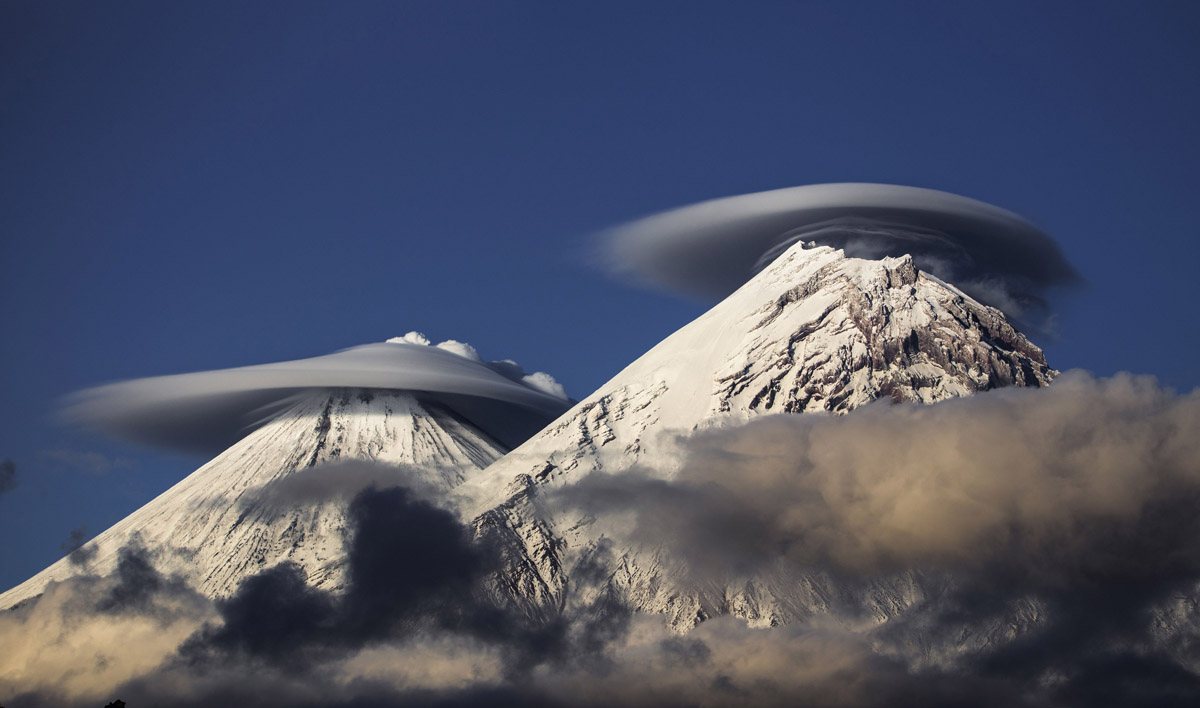
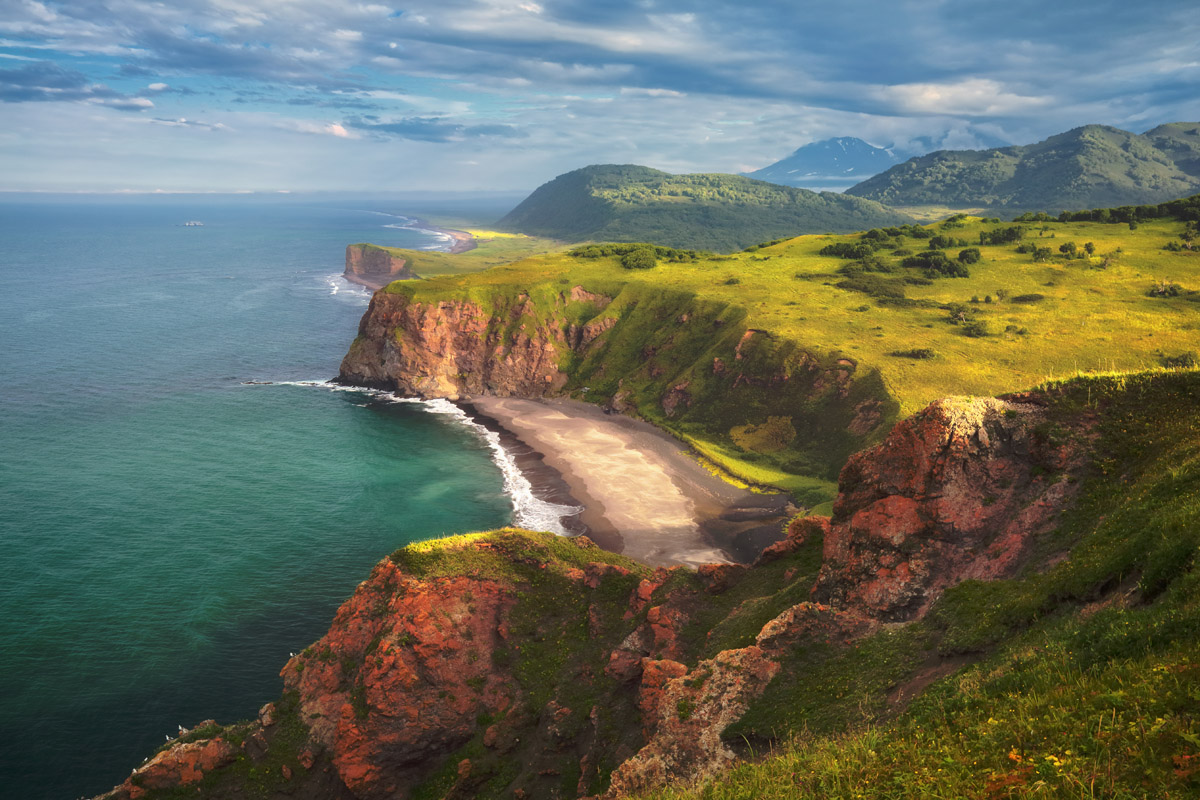

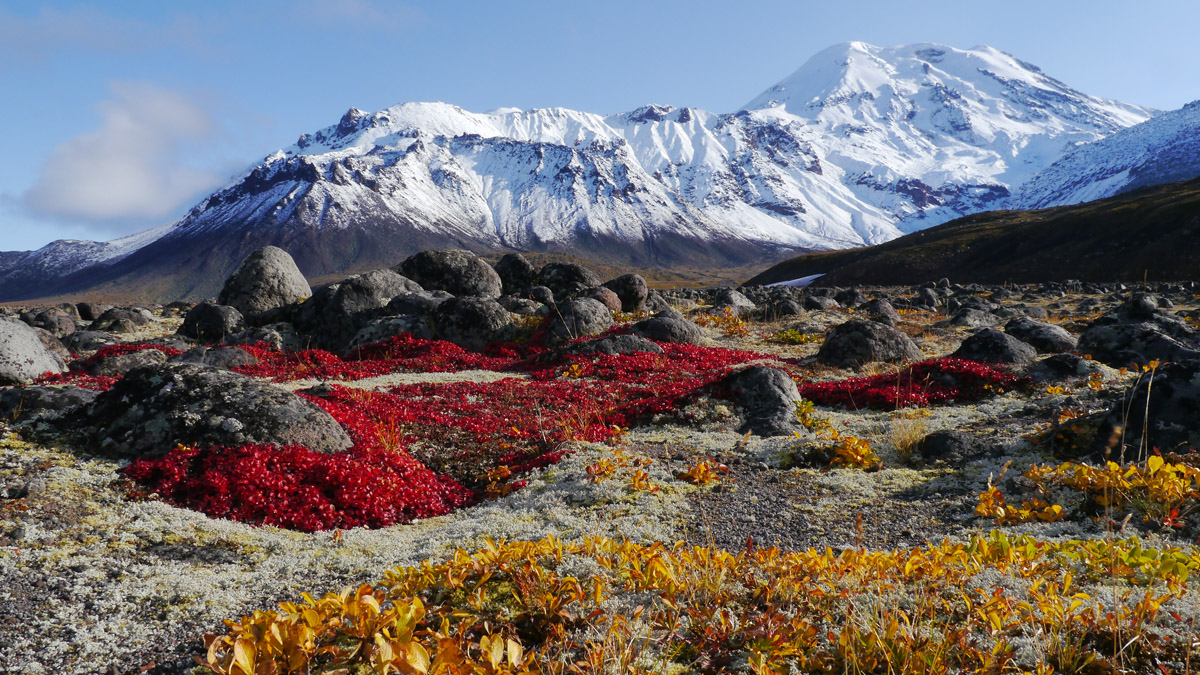
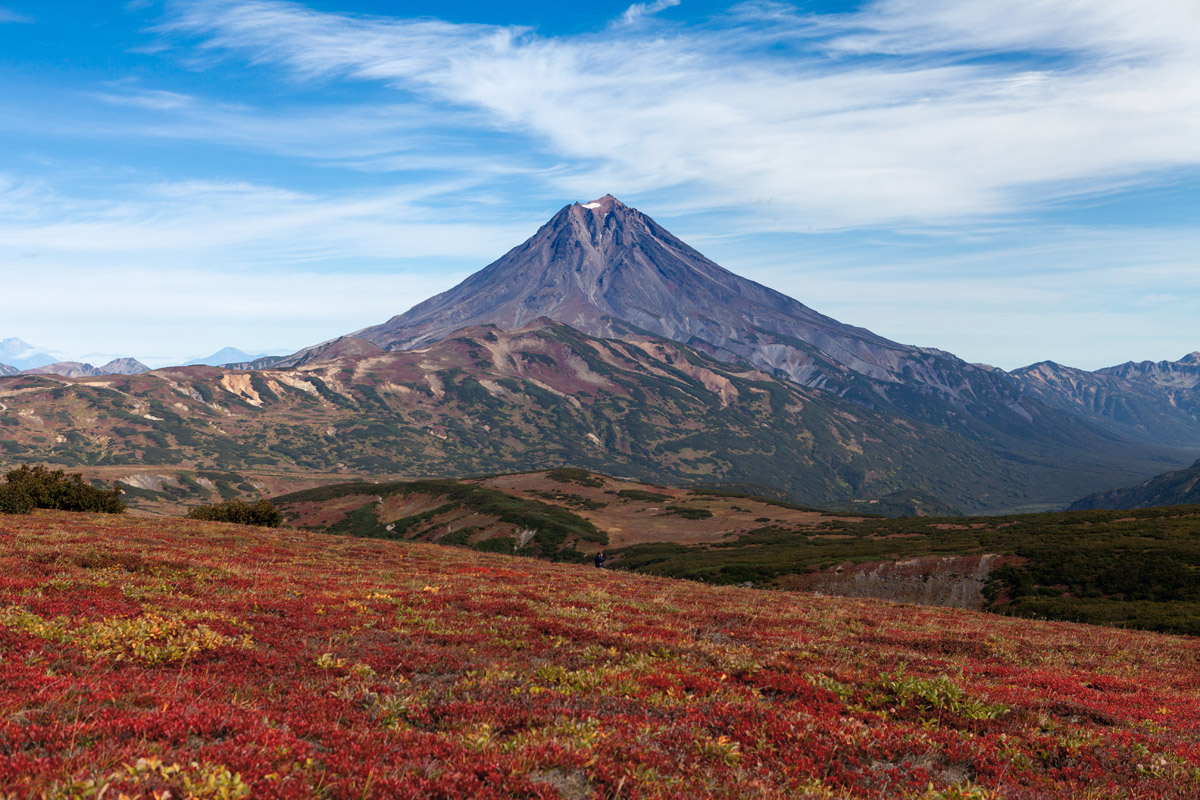
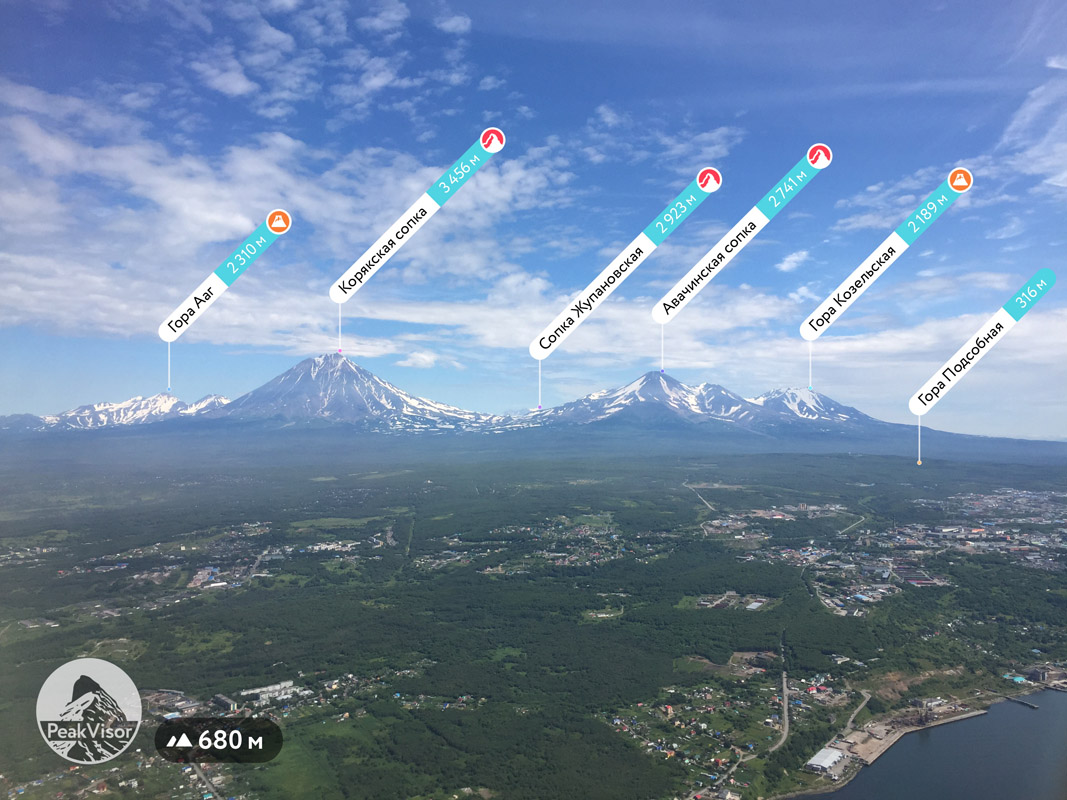
Explore Kamchatka with the PeakVisor 3D Map and identify its summits.








